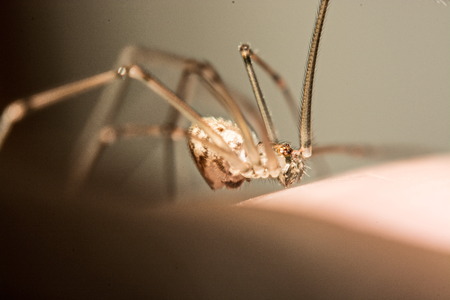Understanding the Link Between Pest Control and Property Maintenance
Proactive property maintenance is at the heart of effective pest control in UK homes, where a combination of climate-specific challenges and diverse housing stock often creates ideal conditions for unwanted intruders. The UK’s temperate weather, frequent rainfall, and seasonal shifts can all contribute to increased moisture levels, making older brickwork, timber frames, and period properties particularly vulnerable to infestations from rodents, insects, and other pests. By implementing regular inspections and timely repairs – such as sealing cracks, repairing damp patches, maintaining proper drainage, and ensuring good ventilation – homeowners can significantly reduce the likelihood of attracting pests. These preventative measures not only protect the structural integrity of a property but also align with modern British standards for health, safety, and comfort. When property care routines are tailored to local building styles and environmental factors, they form a comprehensive defence strategy that minimises pest attractants before infestations begin.
Common Pests in UK Homes and their Entry Points
Understanding the typical pests that invade British homes is essential for developing robust pest control and property maintenance strategies. The UKs temperate climate supports a variety of household invaders, with rodents, cluster flies, and house spiders among the most prevalent. Identifying both the pests and their access points enables homeowners to implement effective preventive measures.
Prevalent British Pests
| Pest | Description | Potential Risks |
|---|---|---|
| Rodents (Rats & Mice) | Nocturnal, often found in lofts, basements, and kitchens; seek warmth and food. | Damage to wiring, insulation, and stored food; potential spread of disease. |
| Cluster Flies | Gather in large numbers during autumn/winter; hibernate in wall cavities and lofts. | Nuisance swarms, unpleasant odours, staining of surfaces. |
| House Spiders | Common in corners, basements, bathrooms; thrive in damp or undisturbed areas. | Cobweb build-up; generally harmless but can cause distress. |
Typical Access Routes into Domestic Settings
Pests exploit even the smallest gaps to enter properties. Recognising these entry points is crucial for comprehensive property maintenance:
- Gaps around doors and windows: Poorly sealed frames provide easy access for insects and rodents alike.
- Air bricks and vents: Essential for ventilation but often inadequately protected against small animals.
- Pipes and utility lines: Openings for plumbing or cables may leave unsealed gaps.
- Roof spaces and soffits: Loose tiles or damaged fascia boards enable birds, rodents, and insects to infiltrate attics and lofts.
Integrating Pest Identification with Property Upkeep
A vigilant approach combining routine inspections with strategic sealing of potential entry points is key. Incorporating pest management into regular property maintenance routines not only curbs infestations but also preserves the structural integrity of the home. In the following sections, we’ll examine practical methods for preventing pest ingress while enhancing overall property resilience.
![]()
3. Preventative Maintenance: Sealing, Repairs, and Routine Checks
Proactive property maintenance is a cornerstone of effective pest control in UK homes. Regular inspections are essential for early detection of vulnerabilities that pests can exploit. Adopting best practices for routine checks ensures that small issues, such as cracked brickwork or loose roof tiles, do not escalate into major infestations or structural damage. Homeowners should conduct thorough surveys of both the interior and exterior, focusing on potential entry points around windows, doors, and utility penetrations.
Damp-Proofing: A UK Essential
Damp environments attract a range of pests, from woodworm to cockroaches. In the UK’s often wet climate, maintaining proper damp-proofing is critical. This involves inspecting and repairing any breaches in damp-proof courses (DPC) and ensuring adequate drainage around the property’s foundations. Applying sealant to gaps and using moisture-resistant materials in susceptible areas—such as basements and ground floors—are highly recommended by British property standards.
Insulation and Sealing Best Practices
Quality insulation not only improves energy efficiency but also acts as a barrier against rodents and insects seeking warmth during colder months. Ensure lofts, cavity walls, and pipework are properly insulated and free from gaps. Use steel wool or specialist sealants to block holes, particularly where pipes enter the building. All repairs should comply with relevant British Standards (BS), such as BS 8102 for waterproofing below ground structures.
Routine Maintenance Schedule
Establishing a regular maintenance schedule is key to prevention. Quarterly checks for signs of wear, pest activity, or moisture ingress allow for timely interventions. Document each inspection and repair in a logbook—an approach favoured by professional UK property managers—to track recurring issues and demonstrate compliance with health and safety regulations.
Integrated Pest Management (IPM) for British Households
Integrated Pest Management (IPM) is a cornerstone of modern property maintenance in the UK, offering a sustainable and holistic approach to pest control. Rather than relying solely on chemical treatments, IPM combines a range of strategies tailored to the unique challenges faced by British homes—balancing effectiveness with environmental responsibility.
Understanding IPM: A Multi-Layered Approach
IPM encourages homeowners to assess, monitor, and manage pest problems through an informed decision-making process. This proactive method prioritises long-term prevention and minimal risk to people, pets, and the local environment. The table below outlines key components of an effective IPM strategy suitable for UK households:
| IPM Component | Description | Example for UK Homes |
|---|---|---|
| Inspection & Monitoring | Regular checks for signs of infestation and entry points. | Monthly loft and cellar inspections; checking for droppings or gnaw marks. |
| Prevention | Addressing structural vulnerabilities to stop pests entering. | Sealing gaps around doors, windows, and pipework; repairing loose roof tiles. |
| Cultural Controls | Adapting household habits to reduce pest attraction. | Proper food storage; regular waste disposal; maintaining tidy gardens. |
| Physical Controls | Using barriers, traps, and deterrents as first-line defence. | Installing door sweeps; using humane mouse traps; copper mesh in vents. |
| Chemical Controls (as last resort) | Selective use of approved pesticides when other methods fail. | Bait stations for rats in outbuildings; gel baits for cockroaches. |
| Biological Controls | Introducing natural predators or environmentally friendly agents. | Nematodes for garden slugs; encouraging ladybirds for aphid control. |
Sustainable Solutions: Safe Traps, Baits, and Natural Deterrents
A key advantage of IPM is its focus on safety and sustainability. For many common British pests—such as rodents, moths, and ants—homeowners can employ a blend of traditional and innovative solutions:
- Traps: Choose snap or live-capture traps for mice and rats. Always place them away from children and pets. Check traps frequently to ensure humane treatment.
- Baits: Use tamper-proof bait stations with rodenticides only if necessary, adhering strictly to label instructions. For insect issues, gel baits can be discreetly applied in kitchens and bathrooms.
- Natural Deterrents: Essential oils like peppermint deter spiders and mice when used along skirting boards. Citrus peels can repel cats from gardens. Diatomaceous earth helps control crawling insects without chemicals.
The Role of Professional Support in IPM Programmes
While many aspects of IPM can be managed independently, there are occasions—such as severe infestations or when protected wildlife is involved—where professional pest controllers certified by the British Pest Control Association (BPCA) are essential. These experts can conduct thorough risk assessments, apply targeted treatments safely, and offer advice on long-term prevention that aligns with both regulatory requirements and best practice in property maintenance.
5. Legal Obligations and Responsibilities in the UK
Within the context of pest control and property maintenance, both landlords and homeowners in the UK are bound by specific legal duties designed to uphold health, safety, and overall living standards. The foundation of these responsibilities lies in several key pieces of legislation, most notably the Housing Act 2004, the Landlord and Tenant Act 1985, and regulations set forth by local authorities. Understanding these requirements is essential for ensuring compliance and maintaining a safe home environment.
Landlords’ Legal Duties
For landlords, the law is clear: properties must be fit for human habitation and free from hazards that may impact tenants’ health, including infestations by pests such as rodents or insects. Under Section 11 of the Landlord and Tenant Act 1985, landlords are responsible for keeping the structure and exterior of their property in good repair, which includes addressing any issues that might attract pests, such as damp, broken windows, or gaps in walls. If an infestation occurs due to disrepair or structural faults, it is typically the landlord’s duty to arrange prompt pest control treatment.
Responding to Infestations
If tenants report a pest problem, landlords must act swiftly. Ignoring pest complaints can lead to enforcement action by local councils, hefty fines, or even prosecution under the Housing Health and Safety Rating System (HHSRS). In severe cases where an infestation renders a property unsafe or uninhabitable, councils have the authority to issue improvement notices or carry out emergency remedial work at the landlord’s expense.
Homeowners’ Responsibilities
Homeowners are similarly obliged under public health laws to ensure their properties do not harbour conditions likely to cause nuisance or risk to neighbours – including unchecked pest activity. Local authorities can serve statutory notices requiring homeowners to take action if their property becomes a source of infestation affecting surrounding homes. Regular maintenance, timely repairs, and proactive pest prevention are therefore not just best practice but also a legal expectation.
The Importance of Record-Keeping
Both landlords and homeowners should keep detailed records of property inspections, reported problems, repair works undertaken, and communications with tenants or contractors. Such documentation can be invaluable if disputes arise or if proof of compliance with legal obligations is needed in future proceedings.
Ultimately, integrating robust pest control measures within regular property maintenance routines is not only crucial for protecting occupants’ health but also forms a cornerstone of responsible property management under UK law.
6. Case Studies: Effective Strategies from UK Properties
Integrating pest control with property maintenance is essential for British homeowners aiming for long-term protection and value. Here are several real-life examples from across the UK that showcase how a combined approach delivers tangible results.
Victorian Terrace in Manchester: Preventing Rodent Infestations
A family living in a period terrace noticed signs of rodent activity every winter. After multiple reactive treatments, they worked with local professionals to carry out a structural assessment. Gaps beneath floorboards and at pipe entry points were sealed using rodent-proof mesh and expanding foam. Regular roof inspections were scheduled to check for tile displacement, while garden waste was managed diligently. The result: no further infestations over two years, illustrating the impact of integrating maintenance with pest control.
London Flat Conversion: Tackling Cockroach Issues
A converted Victorian flat block in East London suffered recurring cockroach problems due to communal bin storage and outdated drainage systems. The property management company coordinated a full clean-out of communal areas, installed improved refuse facilities, and upgraded kitchen and bathroom seals in each unit. Ongoing quarterly pest monitoring was introduced alongside routine checks of shared spaces. Residents reported a dramatic drop in pest sightings within months.
Cotswold Cottage: Protecting Against Woodworm and Damp
An owner of an 18th-century stone cottage discovered early woodworm damage during a routine inspection. Instead of treating only the affected beams, the property underwent comprehensive damp-proofing and ventilation upgrades, along with targeted timber treatment. By addressing both the root cause (excess moisture) and the infestation, the homeowner preserved original features while preventing recurrence—a testament to holistic maintenance strategies.
Lessons from Real Homes
These case studies underscore that effective pest management in UK homes is not just about quick fixes but about building resilience through regular upkeep, modernisation, and vigilant monitoring. British homeowners benefit most when pest prevention is woven into every aspect of property care—from upgrading insulation to maintaining gardens and ensuring proper waste disposal.


